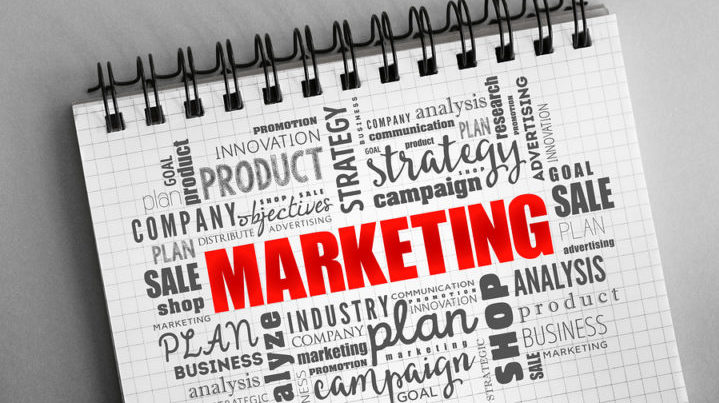Five ways to refresh your marketing strategy.
At Vistaprint, we understand the new year is an opportune time for small businesses to take a deep breath and set themselves up for success for the next 12 months. And one element of small business ownership that frequently needs a check-in is your marketing strategy. Refreshing your marketing strategy is an excellent way to reposition your business and find new pathways to growth in your industry and community, and it also lets you apply some of the lessons learned from the previous year so you can pivot and adapt quickly when needed. Here are the top five things to consider when revamping your strategy for the new year.
Setting your budget
As a general rule of thumb, it’s best to be realistic about matching your budget to your goals for the year ahead. If you’re looking to maintain your current business, you would need to set aside 5–7 per cent of total revenue for your marketing budget. To grow your business, you should be looking to spend 7–10 per cent, and to really aggressively gain market share you’d be looking at 10–20 per cent for your dedicated marketing budget.
“Keep it simple and develop a strategy centred around your own business goals.”
While budgets aren’t the most glamorous part of marketing or small-business ownership, it’s important to remember that cash is king. It’s easy to get caught up in the doing – in creating products, fulfilment or customer service – but it’s key to step back and be clear on what you have to play with and then get to the business of how best to spend it. Plan this budget across the year and keep recalibrating based on your monthly sales projections to ensure a positive cash flow.
Finding your audience
The success of your marketing strategy lies in your ability to attract customers. So it’s important to find and engage your audience. After the year that was, your usual marketing methods may have shifted a little – for example, we know that street marketing has really slowed down due to the pandemic and lockdowns. Digital advertising and social media ads are one of the fastest, most targeted and measurable ways to reach your customers, as you can focus on spending money on the audiences you want to attract, be it by age, location or interests. It also doesn’t require a big budget to get going (unlike a TV ad) so there is no barrier to starting.
Just remember to be really laser-focused on who you’re trying to engage – go back to your core consumer or new audience segment and think critically about where they live (digitally), when and what else they consume and the platforms you should test or prioritise first.
Stand out from the competition
Find the space where you can stand out over the next year by knowing how your brand differentiates from (and beats!) its competitors, and hero these unique selling points through your marketing so it’s the first thing potential customers see. Look at offering additional services that will help you differentiate yourself or encourage first time buyers to try you out – like free trials, subscriptions, longer return periods, or money-back guarantees!
Also, don’t be afraid to tell your personal story. Remember, people don’t buy what you do; they buy why you do it. Storytelling is such an integral part of any marketing strategy and really shows off your business’s personality. Think captivating video content and photography that show off your product or service in a really inspirational light. Reviews from real customers can help here, to show that your story is authentic.
Optimise your real estate
What spaces does your business have that it can brand? This is where clever merchandising and marketing meet. Good windows turn window shoppers into foot traffic. Think simple, high-impact signage that explains your business personality in a few quick glances. Product presentation and flow is key when merchandising your store. Consider how customers shop – where is the highest foot traffic area? Can you turn this hotspot into the location of your best-selling product, and then merchandise complementary items around it? It’s worth considering if the customer flow or length of time browsing may have changed when customers are returning instore after lockdowns – do you need to adapt to social distancing rules, offer collection locations, or fast shop and contactless payment options?
If you don’t have a store, do you have a company vehicle you can brand with magnets, stickers or a custom paint job? Or if you run your business outdoors and at markets, try flags, outdoor banners and wearable branding (T-shirts and hoodies).
Build out the experience
Think about how you can build on your current customer experience – from physical interactions to digital engagements. This is a sure-fire way to keep your customers coming back for more and to entice new ones. Experiential and event marketing could take a while to come back in the post-pandemic market, but when confidence returns we expect customers will be looking to businesses to deliver even richer experiences. Are there ways you could use your store space for an experience that complements your brand or to drive great 1:1 service?
Another tip for both bricks and mortar retailers and online players is to level up their packaging. How a customer feels about their purchase (and how premium it is) depends a lot on how you pack it for them and present it to them. Not only that, but a well-branded bag being carried down the street expands your reach; it’s free walking marketing!
Offering e-receipts or an email loyalty program also boosts your customer connection and will give you a chance to capture customer details so you can start building out your relationship and engaging over time. Plus, email is a really inexpensive marketing channel to run. Consider setting up automated welcome emails when customers first sign up, to connect with them while they’re highly engaged. This could be a simple note or a special offer to incentivise a bigger spend. For example, if your average order is $60, why not offer $20 when they spend $100 again that same month?
There are myriad ways to approach your strategy, but the most important thing is to keep it simple and develop a strategy centred around your own business goals. Our recent research shows that one of the biggest challenges small business owners have faced over the past pandemic year is marketing (32 per cent), beaten only narrowly by the need for financial support (33 per cent).
This article first appeared in issue 34 of the Inside Small Business quarterly magazine












